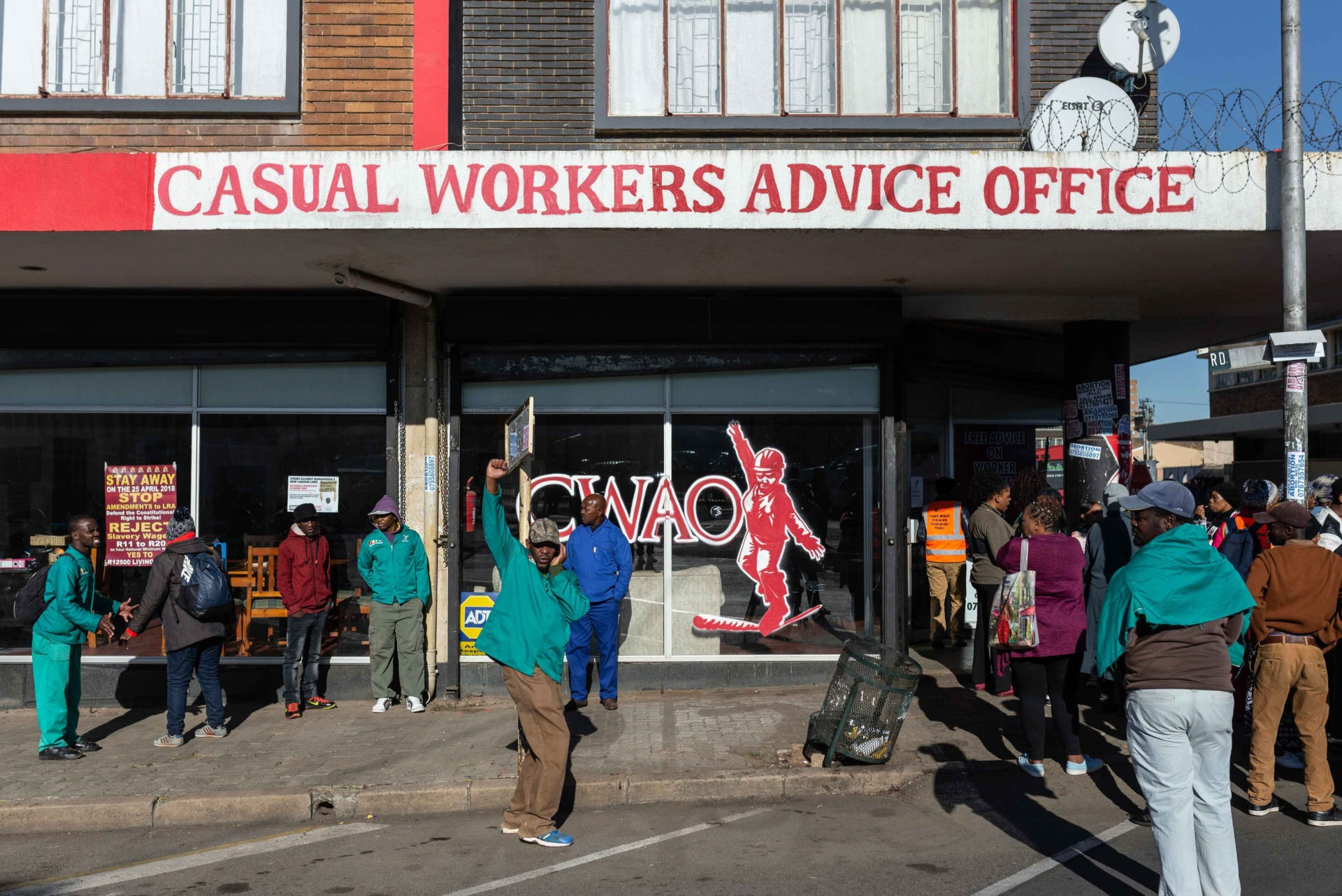In general, the word precarious means insecure. This article discusses organising workers who do not have any kind of job security. Different forms of categorisation have been defined by both the public and the private Sector.
In the private sector, the bosses define them as Labour Broker workers or Fixed Term Contract workers or part-time workers, whereas in the public sector, they are defined as short term contract, volunteers, community health, EPWP and CWP workers. This is called the casualisation of work.
Casualisation of work refers to the shift from permanent, full-time employment to temporary, flexible, or precarious work arrangements, often lacking job security, benefits, and rights. But SA has a particular history of casual work because its profit-making system has always depended on cheap black labour and continues to do so. Sectors like construction, hospitality and wholesale & retail have always used lots of casual labour – which is one form of cheap labour.
It is not easy organising this category of workers because they move from one workplace to another in a short space of time. The CWAO (An advice office) has over the years made significant strides in organising and assisting these workers challenge the bosses. When the CWAO was formed in 2011, none of traditional trade unions took an effort to organise these workers. In different workplaces, shopstewards and union members view these workers as a shield against retrenchments. On the other hand, union officials regard these workers as an administrative nightmare.
The work done by the CWAO in bringing these vulnerable workers together in solidarity bear fruit in 2015. An amendment to S198 of the LRA 66 of 1995 gave these workers new rights. They now could challenge employers and be made permanent. Over 10 000 workers were made permanent using these new rights. Rejoicing on the gains achieved through their struggles these workers resolved to form their own trade union and named it Simunye Workers Forum (SWF). It was a totally different union in character and structurally. At the same time the bosses were unleashing every trick in the book to undermine these new rights. They started dividing workers into deemed-permanent workers. This meant that these workers would continue to be discriminated and denied some benefits as enjoyed by permanent workers.
The SWF in my view provides a platform for solidarity amongst different workplaces. It also provides space for movement building and political education. When it was formed in 2015 it was resolved that the union will have a constitution and a standing committee but will operate as an Unregistered Trade Union. The Labour Relations Act (LRA) doesn’t directly address “unregistered trade unions”. However, unregistered workers and unions can still participate in protected strikes. They can still represent employees in disputes, but their rights and protections are more limited. Later, this proved to be a problem for members of SWF.
In workplaces where these employees were deemed permanent, employers continued to deny them benefits enjoyed by the permanent workers. This meant that these workers had to bargain with the employers over those unequal benefits. But they could not bargain through the SWF as their organisation, since employers did not recognise an unregistered Trade Union. This was a serious turning point for the SWF as a worker’s movement. The idea that these workers could forgo pursuing equality was not in the best interest of anyone.
Alternatively, workers joined unions organising in those workplaces with the hope they will also take up their issues. Very few workers who joined these unions benefitted, the majority got nothing out of it. It was at this time that the decision not to register the SWF was reviewed and changed. The SWF then applied for registration but the Registrar refused to register SWF. This matter in now in the courts.
In conclusion, it is my view that precarious workers come and go because their status is designed not to guarantee permanent relationship with neither the employer nor the unions. Organising vulnerable workers is going to be difficult to measure in numbers but rather specific cases of success and positive inroads.
Amandla!!!
This article was submitted on 10 June 2025. You may republish this article, so long as you credit the authors and Karibu! Online (www.Karibu.org.za), and do not change the text. Please include a link back to the original article.


 Download PDF
Download PDF
